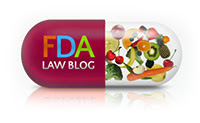
Posted: 30 Jan 2019 10:50 PM PST FDA recently hosted a webinar on the final guidance regarding the Breakthrough Devices Program. The Breakthrough Device Program is meant to speed access to new devices that treat or diagnose “life-threatening or irreversibly debilitating diseases or conditions.” See our previous post for a more in-depth review of the content of the final guidance. Maureen Dreher, Policy Analyst in the Clinical Trials Program at the Office of Device Evaluation, presented an overview of the Program as set forth in the guidance as well as a summary of the differences between the draft and final versions. This portion of the presentation was relatively brief; most of the time was allocated for questions and answers. We found much of the information provided during the Q&A discussion to be useful and summarize what we considered the most insightful details below. A copy of the webinar slides is available here. Preventative Indications One participant asked whether a device with a preventative indication that otherwise meets the breakthrough designation criteria would be eligible for the Program. To satisfy the first criterion a device must “provide for more effective treatment or diagnosis…” FDA did not preclude the possibility that a device with a preventative indication could qualify for breakthrough status, but suggested the determination may require careful wording of the indications and discussions with the Breakthrough Device Program staff. Substitute for 513(g)? A breakthrough designation request may include a statement of the planned marketing application—510(k), De Novo or PMA. In its review of the designation request, FDA will make sure the product is, in fact, subject to premarket review, but the Agency will not comment on whether the sponsor has chosen the appropriate pathway. The Breakthrough process is not a substitute for a 513(g). Publication of Decisions and Metrics One person asked whether FDA will be publishing a database of requests for designation determinations. FDA explained that the breakthrough designation requests and decisions are confidential. While a sponsor may wish to publicize that it received breakthrough designation, FDA will not maintain a public database of this information. Multiple participants also expressed interest in the publication of the metrics of the Program—how many requests are received, granted, etc. While these metrics are currently being tracked internally to inform programming decisions, FDA stated that there is no formal plan to publish them, but the speaker said that she would take the request for publication of the metrics back to management. We note that FDA has communicated metrics from time to time. For example, at the Association of Medical Diagnostics Manufacturers Focus meeting in Los Gatos, CA last October, FDA reported that it had granted 95 breakthrough requests (it’s unclear if this is just since the statutory change or also includes designations under the EAP guidance). Of those 95, 29 were for IVDs. Similarly, in a statement yesterday from Commissioner Gottlieb and CDRH Director Shuren regarding new steps to promote innovations in medical devices that help advance patient safety, the Agency reported that 112 devices have received breakthrough status. Expected Level of Product Development There is no expected level of product development prior to seeking breakthrough designation, but FDA is looking for evidence on technical success and clinical impact. Specifically, FDA expects bench data that the device functions as intended, preliminary animal data on clinical impact, and/or literature that the product is likely to be more effective than currently available alternatives. In our experience with the program, the data need not be extensive, but it must show that there is a reasonable likelihood that the device may be able to achieve the breakthrough indication. Broad Indications One participant asked whether a device can obtain breakthrough designation for a broad indication where a subset of that indication could qualify as a breakthrough. The speaker explained that is not how the Program was intended to work. A company may decide to seek designation for the narrower indication initially and pursue the broader indication in the future. The general, non-breakthrough indication would be subject to the regular premarket procedures and timelines. ### In concluding the call, FDA stated that any chance for FDA staff to engage with stakeholders improves understanding on both sides. We appreciate FDA taking the time to present this information, and more importantly, to allow such a substantial portion of time to answer questions. |





















.jpg)









No hay comentarios:
Publicar un comentario